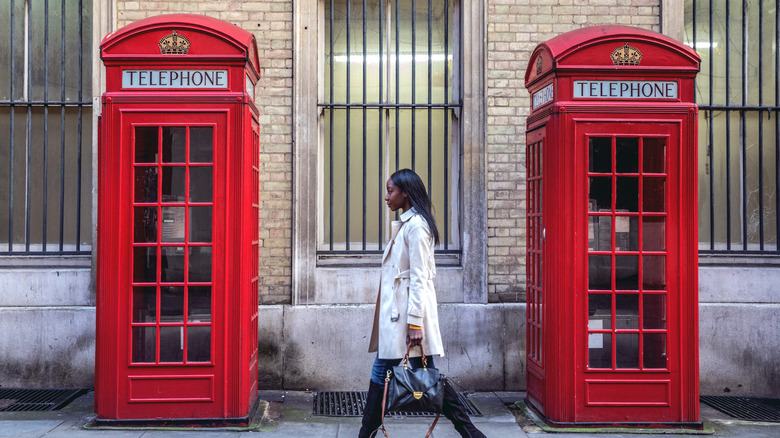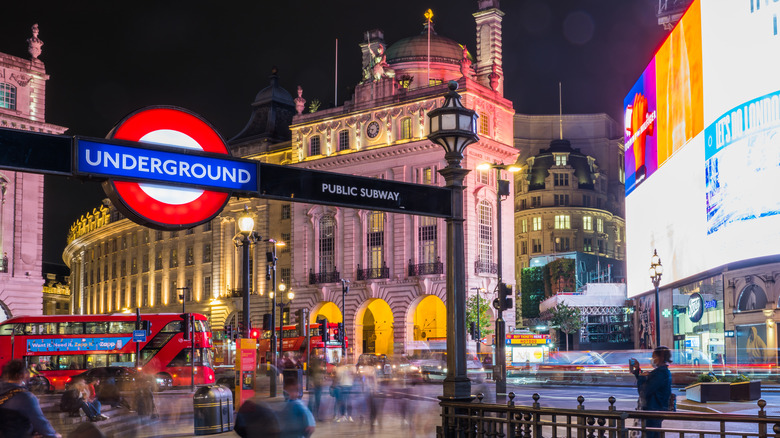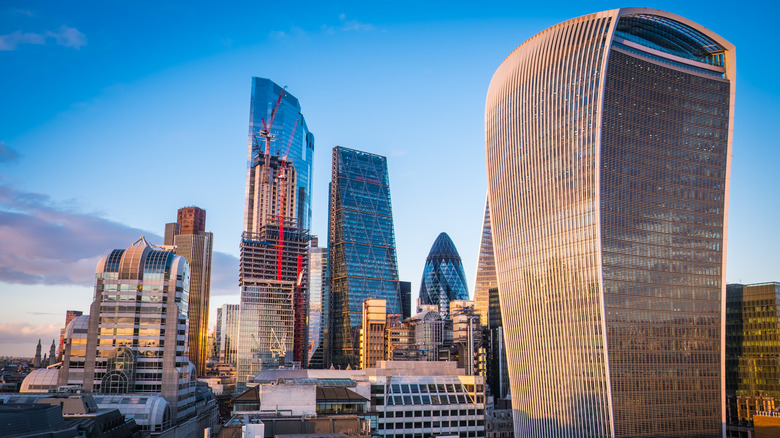Tourists Should Avoid This Common Word When Discussing London As It Confuses Locals
Trunks and hoods versus boots and bonnets. Sidewalks and crosswalks versus pavements and zebra crossings. Potato chips (crisps) versus chips (french fries). To-may-to, to-mah-to — let's call the whole thing off. Americans and the British may share English as a common language, but the two strains have diverged somewhat over the years since the first colonists made their intrepid journey across the Atlantic in the 17th Century. The differences between American English and British English are a source of constant amusement for expats the world over, although it is rare for these linguistic quirks to cause any serious confusion. However, one term that may seem pretty commonplace has been singled out as a mistake. When visiting London, tourists from across the pond typically refer to a central part of the city as "downtown."
London is a huge place, and it is one of the most multicultural cities in the world. People from almost 300 nations and ethnicities call it home. With such a broad mix of cultural influences, it comes as no surprise that real Londoners don't always speak like East End gangsters or Victorian chimney sweeps, as Guy Ritchie or some Hollywood movies might try to tell you. Indeed, you're just as likely to hear someone speaking Multicultural London English (MLE) than Cockney rhyming slang nowadays. So, what is it about this straightforward Americanized word that causes confusion, and what should you say instead?
Why is the term downtown confusing to Londoners?
Whether you are visiting London for a winter getaway or in any other season, you'll notice that the British almost never refer to the central area as "downtown." They might say, "I'm popping down town this afternoon," or "I'm heading into town later for a few pints." They might have a job in town, and if they are being more formal, they might say they work in the "center," "city center," or "town center." But they wouldn't say downtown. That's because the conflation of the words "down" and "town" is an American invention, its first recorded use dating back to a murder trial in Boston in 1770. Since then, it has spread across the United States as the commonly accepted term for a city's hub of commerce and culture, and it has yet to fully make the leap across the Atlantic.
A number of locations might spring to mind when we think of "downtown London." It could be the attractions you won't want to miss, like Buckingham Palace, Trafalgar Square, and Westminster Abbey. We might imagine the theater district in the West End, the buzzing bars and restaurants of Soho, or the bright lights of Piccadilly Circus. But while most of the city's iconic sights are contained within a relatively small area in the heart of Greater London, they are split across several distinct boroughs. This is usually referred to as central London, which itself is vague enough without calling it downtown.
Why being specific is key to navigating central London
If we stick to the dictionary definition of downtown as the central commercial district of a city, then we might pinpoint London's downtown as the tiny hub that is the financial powerhouse of the capital. This is the City of London, which is just 0.18% of the capital's total surface area and encompasses the Bank of England, St. Paul's Cathedral, and Norman Foster's controversial Gherkin. But guess what? Londoners wouldn't call that downtown, either; they'd more likely say "the City" or "the Square Mile."
Switching to "Central London" is unlikely to clarify matters because there are 12 neighborhoods classed as inner London boroughs spread out across the center of the city with very distinct personalities. These range from posh residential areas like Kensington, the seat of the British government in Westminster; Southwark, Lambeth, and Wandsworth on the south bank of the river Thames; and down-to-earth Hackney in the East End (although that definition is contested). To walk from westernmost Hammersmith to Hackney can take around three hours, so you'll have to be more specific than that.
The good news is that the London Underground will get you pretty much anywhere you want to go, and its famous map is a good way of familiarizing yourself with the general layout. If you're asking for directions or talking to a Londoner about somewhere in the middle of the city, however, your best bet is to name a particular borough or a well-known landmark.


